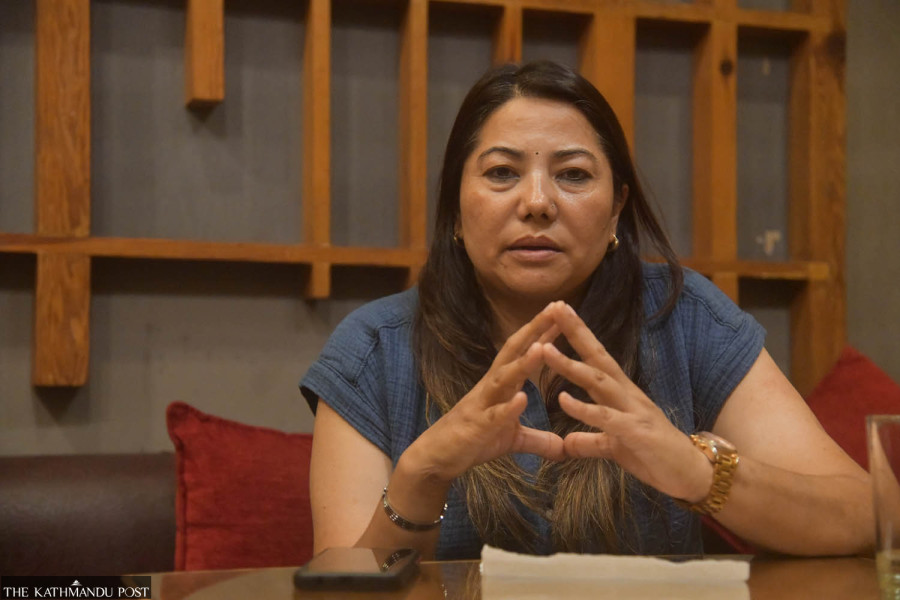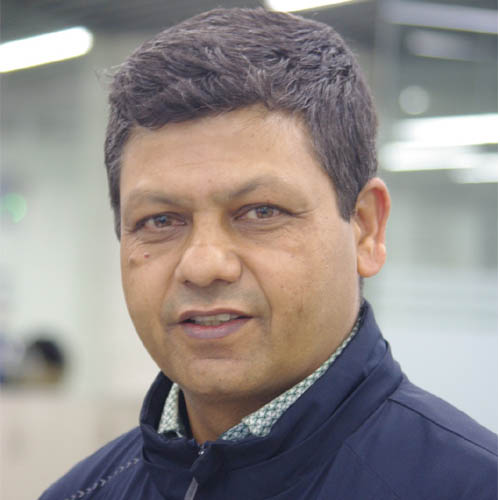Interviews
Unified Socialist can’t run like this. It’s better to merge with UML
If the party merges with the Maoist Centre, our cadres will eventually return to the UML. Rather than irritate UML, we must take each positive gesture as an opportunity for unity.
Thira Lal Bhusal
CPN (Unified Socialist) leader Ram Kumari Jhakri was among the most active leaders involved in the formation of the party after split with the CPN-UML in 2021. Three years on, she is now the most vocal leader calling for a unification of the two parties. Why didn’t the new party perform well, and what made her lobby for a party merger? Post’s Thira Lal Bhusal sat with former minister Jhakri for more insights.
You worked actively to form the CPN (Unified Socialist), but the party couldn’t perform well. It couldn’t even become a national party from the general elections. What went wrong?
We formed the CPN (Unified Socialist) out of compulsion. When Prime Minister KP Sharma Oli—who was prime minister at the time as well—dissolved the House of Representatives in December 2020, we firmly stood against his move, saying that it sowed the seeds of political instability. We staged huge protests and moved the Supreme Court against the decision of Oli, our party chair at the time. I was among the petitioners.
Once the top court reinstated the House, we expected the party to move smoothly. Unfortunately, that couldn’t happen. The party establishment led by Oli and the rival faction took extreme actions against each other. The agitating faction announced action against the party chair, and the party establishment expelled us from the party itself. When Oli dissolved the House a second time, we protested the move as it brought instability. We were in favour of transforming the party through intra-party struggle, but the situation took some unexpected turns. We didn’t quit the party with a lofty plan of making a new revolutionary organisation. We were compelled to do so.
Our new party accommodated many genuine leaders who had been sidelined in the UML. But ultimately, old leaders heavily dominated the new party’s central committee. They were active leaders of their time but were out of touch with the new, changing context. Young leaders didn’t get space in party committees. I proposed recruiting at least 40 percent members under 40 years in the central committee and over 50 percent members under 30 years in the district committees. I made a 29-year-old leader the chair of the district committee in my home district. In 42 days, I attended 36 district conventions where youths in their 30s were elected district committee chairs. I tried to reach out to municipalities to promote youths in the party chapters.
But at the central level, old faces dominated party committees. That didn’t attract people to the party or impress the general public. Thus, it failed to gather steam right from the beginning.
Many think that Madhav Kumar Nepal’s selection as party chief was a wrong move since he had led the UML for 15 years and become prime minister, and people didn’t find novelty in the new party. Do you think so too?
Madhav Kumar Nepal has been the most active leader in the party since its inception. Whatever the party has achieved so far is because of him. But a party leader must mobilise teams with defined roles and responsibilities and continuously motivate and engage them in result-oriented tasks. He works a lot but doesn’t mobilise teams effectively.

Observers say the Unified Socialist was formed due to the personality clash between top leaders and that it lacked a national agenda and a clear policy to prove the need for a new party. Do you feel so?
Our immediate agenda was safeguarding the constitution and ensuring political stability in the country. We protested the House dissolution guided by the same policy. But when provincial governments were made like satellites of the federal government, we couldn’t play any role in stabilising them.
The UML is guided by the policy of People’s Multiparty Democracy, propounded by the late Madan Bhandari. There was a debate on further enhancing the policy in the changed context. A large section of Left intellectuals were interested in contributing to that. We could have engaged them in the process. But our party stopped the debate on that topic as well. We missed the chance of engaging many critical individuals in the discourse and having a relatively different policy. When in the UML, we practised direct elections of party representatives and leaders from the conventions. Unfortunately, leaders of the new party, Unified Socialist, made a statute that gave powers to the party leadership to nominate party secretariat, office bearers and other members. Leaders would pick those who are loyal to them. This regressive approach killed competition in the party.
You are known to prefer a more proactive work and decision-making approach. There are rumours that you have been fed up with the party’s lacklustre style and are mulling to join the mother party, UML.
If I were to decide only from a personal perspective, I would have done so much earlier because I had multiple opportunities in the past. But I am for party merger because I don’t see any relevance of running multiple retail shops under communist banners because we are not substantially different from each other in terms of policies. Our electoral system has also made it necessary. The Unified Socialist can’t run like this. We must accept reality and decide—merging our party with the UML is better than running it this way.

But it seems that the top leaders of the twin parties are still bitter about each other.
True, the bitterness lingers on, mainly among the top leaders. We have also made some mistakes. The UML offered some opportunities to the Unified Socialist, and we should have made some offers to capitalise on the favourable situation. At one time, UML leaders proposed our party chair as a candidate for the vacant post of the country’s President. We should have devised our own proposal and made a win-win deal. But we ran away and squandered the opportunity. If Madhav Kumar Nepal had become president on the UML’s proposal, our party might have been reunited with the UML much earlier. I also took an initiative to that end but in vain. Later also, UML chair Oli visited our party chair’s residence to have our party on board the government. But the reaction from our side ruined things. We are certainly not responding to the UML responsibly. Rather than irritate the UML, we must turn each positive gesture into an opportunity for party unity.
One more factor is blocking the unity between the two parties. There are a large number of second-rung leaders in the UML who can’t directly confront Oli. They are now encouraging former President Bidya Devi Bhandari to join active politics and trying to make decisions in their favour through her. Oli knows these leaders will support Nepal when he returns to the UML. Why would he [Oli] then merge the fringe party and create another power centre against himself? He knows Madhav Kumar Nepal will challenge him with the backing of the dissidents. It is natural for a leader to think twice before allowing another leader of your stature to create a parallel power centre within the organisation. Even I would have thought twice. This is a major factor hindering party unity.
Your party chair and other key leaders seem quite close to CPN (Maoist Centre) chair Pushpa Kamal Dahal and critical of UML chair Oli. Moreover, Oli often lambasts Madhav Kumar Nepal publicly. Will they still merge the parties?
In principle, our party is open for unity with any Left party. But party cadres won’t join the Maoist Centre. If our leadership decides to merge the party with the Maoists, a huge number of our party cadres will join the UML. Unity between the UML and the Unified Socialist is natural because we grew up in the same background and orientation. But we are quite different from Maoists.

Several groups trying to form new political outfits have failed to emerge as a major political force and sustain themselves. You worked in a big party for years and also helped establish a new one. What are the challenges of forming a new political organisation in Nepal?
Political parties sustain if they evolve with society. If you trace the history of the Nepal’s Congress and communist parties, you will see how they have evolved over the past seven decades. They competed against each other but joined hands to fight autocratic forces towards establishing democracy. They have done hundreds of progressive things in society. Their major fault is that they have multiple entry points but no exit policy. The only exit way is the death of the leaders. This has caused unhealthy practices and created dissident groups.
The dissidents who didn’t get any space within their party formed new outfits. They also amplified negative narratives against the old parties. It happened with the Congress, the UML and the Maoist Centre. Had there been an exit system in the party, the situation wouldn’t be this bad. But new political parties can’t sustain without their own political ideology and orientation. You may form an organisation, cash in on people’s frustration and achieve some immediate gains, but outfits can’t sustain.
But recent electoral trends show that Nepalis are seeking alternative forces and new faces. Can we be oblivious to that?
You are right. We have seen such trends in the Panchayat system as well. But garnering votes during elections for one term and establishing a sustainable political force are two different things.




 8.12°C Kathmandu
8.12°C Kathmandu











